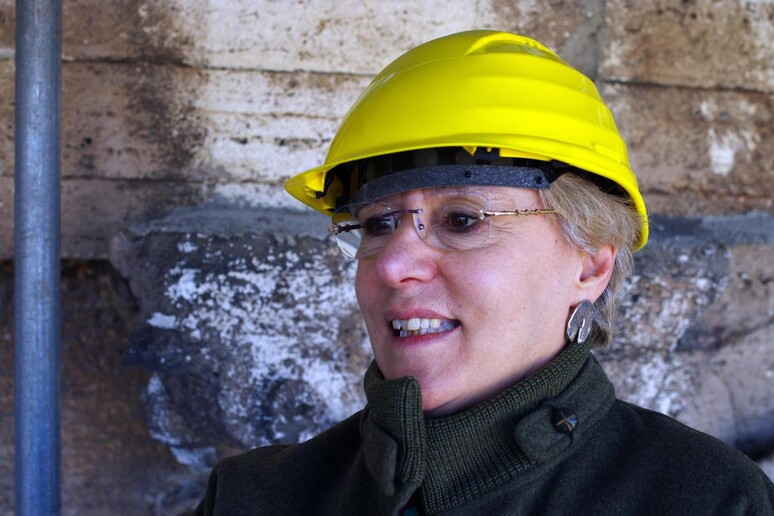(by Paul Virgo).
A dig in Rome related to work
on the city's new C metro line has uncovered the largest ancient
Roman water basin ever found, Rossella Rea, the scientific head
of the excavation, said on Wednesday.
"It was inside an ancient Roman farm, the nearest to the
centre of Rome ever found," said Rea, who leads an all-women
team at a site for the construction of a new metro station that
also features archaeologists Francesca Montella and Simona
Morretta.
The ancient structure, situated in the San Giovanni
district of modern-day Rome, is a monster.
"It's so big that it goes beyond the perimeter of the
(metro) work site and it has not been possible to uncover it
completely," Rea explained.
"It was lined with hydraulic plaster and, on the basis the
size that had been determined so far, it could hold more than
four million litres of water".
Rea said it was part of a facility that functioned from
the third century BC.
"In the first century (AD), structures to lift and
distribute the water were added to an agricultural plant that
was operative in the third century," Rea said.
"The basin was about 35 metres by 70, covering an area of
about a quarter of a hectare.
"It seems likely that its main function was to be a water
reservoir for crops and an area that made it possible to cope
with overflows from the nearby river.
"No other basin from ancient Roman agriculture is of
comparable size.
"Beyond the walls of the work site it extends toward the
(ancient city) wall, where it is probably preserved".
She added that the structure also spreads out in another
direction, towards an existing metro station of the A line.
But she said that part of it was almost certainly
"destroyed without its existence ever being documented".
The excavation took place at more than 20 metres below
ground.
"The historic information about the San Giovanni area (in
ancient Roman times) was scarce," Rea said.
"The area underwent transformations that hid republican
and imperial age structures that existed up until the third
century under metres of soil, first when the Aurelian Walls were
built. The urbanisation of the 20th century led to the
obliteration of every part of it.
"The dig for the new metro station made it possible to
take archaeological research to depths that are otherwise
impossible to reach".
ALL RIGHTS RESERVED © Copyright ANSA











